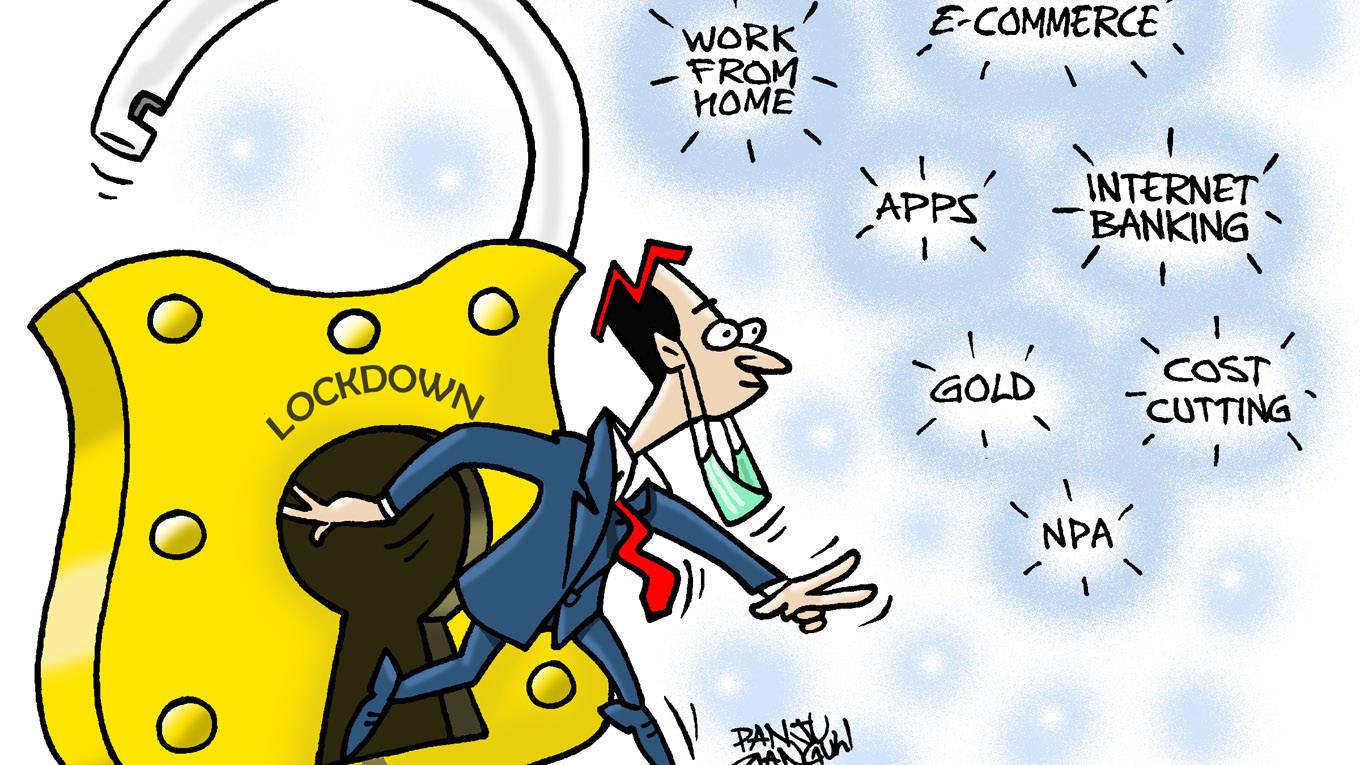-

Affordable housing projects will rise in 2021; Photo: Sanjay Borade
Online retail trade has seen a rise in employment for ensuring last mile delivery. On the other hand, a lull in the trade of retailers, including cloth merchants, property agents and other people who were laid off, had seen many of them from the trading community developing a habit of watching stock market news channels from 9 to 3.30. Putting their idle money to better use, in their opinion, has seen more depository accounts being opened. With central banks pumping in huge funds in the hands of investors in countries like US, UK and many others, asset inflation will be the new norm. Sloshing with liquidity, savvy investors have moved to investing in gold, betting against the dollar. The deluge of foreign funds, along with retail funds has created a situation of huge funds chasing limited stocks, leading to one of the best bull runs of the decade.
The hope and confidence of traders and investors have even exceeded the expectations of some of the most optimistic promoters! The accommodative stance of the RBI, leading to lower savings interest, is also seeing more money flowing into riskier assets like equities with some part going to gold. Of course, interest rates may have to rise eventually. But 2021 may not be the year for this. Markets, for the most part, will remain bullish but interest rates should be watched.
The Indian economy, which has also reeled under lower revenues in the form of lower GST and income tax, is now showing signs of definite recovery. GST, for the past three months, has exceeded Rs1 lakh crore and some amount of shortfall may come down. Corporate taxes will be down as the first quarter was badly impacted. Geopolitical factors have, however, seemed to work in favour of metals where the prices of iron & steel and aluminium have been firming up. The expected negative growth of 7 per cent in FY21 will see a sharp rise in FY22 GDP growth, though from the much lower base of the current year. It is not clear when we will get back to the high rates of real growth of five years ago!
The firming up of crude spells some good news for refineries which have actually benefitted the most from the crisis. Despite the low level of crude prices in global markets, the decision not to reset the petrol and diesel price should see these companies reap a bumper profit. A part of which will be taken up by the government by way of dividends and buybacks. February should see a lot of interim dividend being declared, adding to the kitty. Will the government continue in this fashion or will it come out with a Covid surcharge in the budget for funding its extra budgetary spending to mitigate the miseries of the people?
Ingenuity and innovation have really flourished in the crisis. Several apps for ensuring delivery within two hours have flourished in major cities. While hotel businesses have suffered, several housewives have started business which enable meals to be quickly reached to nearby places as also to their patrons through these delivery apps. Education companies with direct contact with kids have flourished. As have apps which have even seen higher education being delivered through them. However, this trend may not extend beyond the current academic year, though some online courses and teaching are part of the education system now.
-
The deluge of foreign funds, along with retail funds has created a situation of huge funds chasing limited stocks, leading to one of the best bull runs of the decade
Fear of being getting infected with Covid has seen huge consumption of OTC medicines like zinc, calcium, multi-vitamin tablets and what not. Indian pharma companies have seen good times during the pandemic. Will the new techniques of seeking doctors’ consultations through tele-media survive?
The stay home syndrome had impacted aviation and tourism badly from February till September. Even after opening up the aviation sector, people are still travelling only if they are required to. Leisure travel has come down significantly. Business conferences through apps have become the norm and may not return to pre-Covid times till the vaccination drive is over, which won’t be in 2021, but more likely in 2022.
It is an open question whether we will see more inbound travel, with people opting to spend vacations in India. The slower recovery in other parts of the globe and the second wave, have seen several EU countries and the US being off the tourist radar. We will not see inbound tourism before next Diwali.
Cost cutting, which had become the norm across corporate India even prior to the pandemic, only gained traction during the pandemic. Uncertainty had seen the slow trend in project execution by the private sector continue during 2020. There is unlikely to be any radical change as far as any pick-up in projects is concerned, and in 2021 also, the government will be the major project driver. Affordable housing projects will rise in 2021. The recovery of the corporate sector was better than expected in the second and third quarters. This trend is likely to gain traction in 2021 as the year progresses. But again to bounce back to real high growth, compared to two years ago, may only happen in 2022.
Unlike in earlier years where Business India used to focus largely on investments, this time around, several sectors have been looked at by the BI team and trends for 2021 have been predicted. They may not all come true but in a year which will still be far from normal, some slips in forecasting trends can surely be condoned.
-
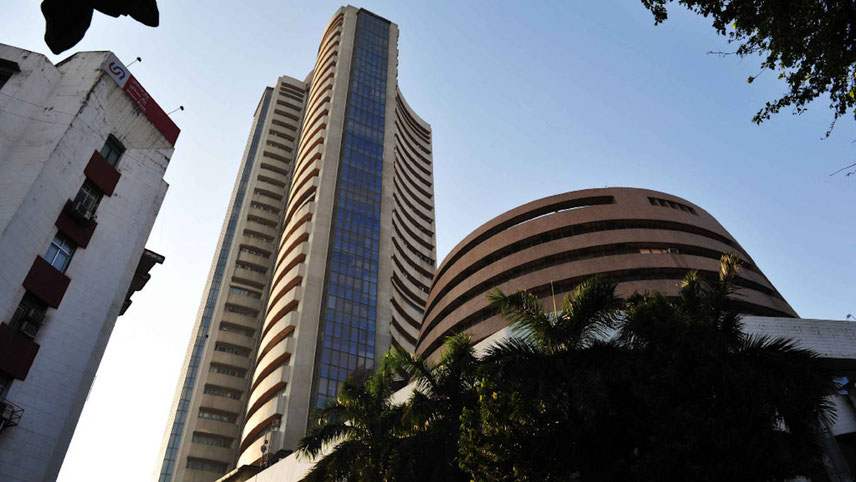
Volatility in markets to stay; Photo: Sanjay Borade
STOCK MARKETS
Sentiments upbeat
There is hope and optimism built in the stock prices which are driving the markets to new highs. Asset inflation is the order of the day, with more than $12 billion liquidity globally. Bond yields are at a decades-long low. This augurs well for markets. Volatility will be more pronounced. The event which will really shape markets in India is the Budget. The finance minister is likely to demand a higher share of the windfall gains. However, sentiments cannot be queered and send investors into a paralytic shock.
Disinvestments in big ticket items like LIC and BPCL are scheduled in CY2021. The firming of interest rates in the US is a damper and could see FII outflows. This last one is a reality check. The last quarter results of FY21 may bring some stability. IPOs supplies will also pull up some retail funds. Inflation and fiscal deficit are figures to watch. However, we are optimistic for the markets and expect to see at least a double-digit growth in FY21.
Nimesh Shah, MD and CEO, ICICI Prudential AMC says: “Markets are in the midst of a ‘developed world Central Bank-driven bull market’. This trend will continue; as long as such flows continue the chances of a major correction in equity market remain diminished. We would review our call if crude oil crosses $60; inflation comes back in the western world and is sustained, US 10-year surpasses two per cent; surplus liquidity with RBI comes off sharply; global money market assets under management fall sharply or there is some unforeseen geopolitical risk.”
Adhering to asset allocation is of absolute importance. Value as a theme still continues to be relatively attractive. We believe there are still pockets of opportunities in the value space providing good dividend yield and have better earnings visibility. Meanwhile, mid and small caps have underperformed large caps in the last couple of years and that trend is expected to reverse.
-

The metal gets even more precious due to depreciation of the rupee against the dollar; Photo: Sajal Bose
GOLD
Safe and steady
Gold has undoubtedly been one of the most preferred assets this year (2020), outperforming all other asset classes, as it witnessed an all-time high of Rs56,191 per 10 gm – up by almost 43 per cent. “Not just this year, gold has been a store of value for centuries due to its distinct characteristics,” says Prithviraj Kothari, director, Riddhi Siddhi Bullions Limited & national president, Indian Bullion & Jewellers Association Ltd. “Gold is considered a safe, steady and liquid investment while having a strong track record of building wealth and enjoys the status of a safe haven asset in adverse economic situations”.
Interestingly, the metal continues to get more and more precious due to depreciation of the rupee against the dollar. And the trend looks to sustain, so long as there is an interest rate differential between India and the US. “It is interesting to note that gold is now being considered not just for consumption purposes, but also as a strategic asset in any portfolio,” informs a report prepared by Religare Broking. “It is advisable to invest 10-15 per cent of one’s portfolio in gold through any of the available mediums, as it bears a low-to-negative correlation with other major asset classes”. The report adds: “Rather than timing the market, gold should always be a part of one’s portfolio as it has been a reliable investment for ages, that has not only stood the test of time during financial hardships as a safe haven, but also has a proven record of decent returns with a low risk factor”.
Gold has always been a great diversifier. As an integral part of a portfolio, it drags down volatility and improves the overall performance of a portfolio. The precious metal has a track record of generating steady returns over various time periods. It has delivered 13.37 per cent annualised CAGR return over the last 15 years; 9.22 per cent for the last 10 years; 14.96 per cent for the last five years; and 19.75 per cent for the last three years.
The environment of ultra-weak monetary policy, with the real rates staying in the negative territory, is here to stay for the year ahead, which is likely to favour gold. Though volatility may remain high after the sharp run up in 2020, but metal is in a firm support zone at Rs47,700-47,200 per 10 gm levels ($1,750 per ounce), while the major floor is at $1,680 per ounce or Rs44,800 per 10 gm. “As long as the counter is placed above the mentioned support area, the long-term structure looks positive, where one can expect an upside towards Rs53,500 per 10 gm initially and then towards Rs60,500 per 10 gm mark in medium term. For the 2021, prices can even scale higher to Rs65,000 per 10 gm,” says the Religare report, suggesting that one of the most lucrative investment options is the Sovereign Gold Bond Scheme (SGBS). “One can take a long-term exposure to gold through SGBS, which can be added to one’s portfolio for diversification, as well as for wealth creation. The additional interest component and capital gains tax exemption, if bonds are held till maturity, ensures higher returns through SGBS,” the Religare report further adds.
-

Year 2021 is expected to be a time of reckoning for the Indian real estate sector; Photo: Sanjay Borade
REAL ESTATE
Gaining in confidence
After having suffered severely in 2020 on account of the Covid-19 pandemic, the domestic realty market is now gradually on its recovery path, with the last two quarters’ numbers having already exhibited that trend. Even as the market is now into a new year, the days ahead promise to bring a much better scenario. And, the housing sector, with its latent demand potential and far better demand dynamics, is expected to lead the way.
Buyers have made a comeback with renewed vigour, with time-bound and focussed government interventions serving as a catalyst to rekindle market sentiment. In 2021, as consumers and businesses move ahead, responsibly managing life and livelihood amidst pandemic-related uncertainties, the market trajectory is expected to meaningfully improve. Experts are of the view that the housing market is set to chart a new path of growth in 2021, fuelled by affordability, reinforced desire to own a house and renewed interest from certain buyer segments, such as NRIs.
In the commercial segment, office occupiers are gradually gaining the desired confidence, after a challenging period of 2020, where the gross absorption of office space across the major cities was down by about 41 per cent. Led by asset classes like data centres and warehousing, the commercial space, as a whole, is likely to regain its growth trajectory in the current year, even as office occupiers plan to return to a ‘business as normal scenario’.
“Overall, we expect 2021 to be a year of reckoning for the Indian real estate sector,” says Shishir Baijal, chairman & managing director, Knight Frank India. “India’s long-term economic fundamentals remain strong, despite the interruptions caused by Covid-19. We expect the growth momentum to return and are already witnessing new avenues emerging in the economy, which eventually will impact the real estate sector positively. Some of the high potential sectors, which Knight Frank India will look at making early headways, are data centres, pharmaceuticals, warehousing and logistics and e-commerce.”
-
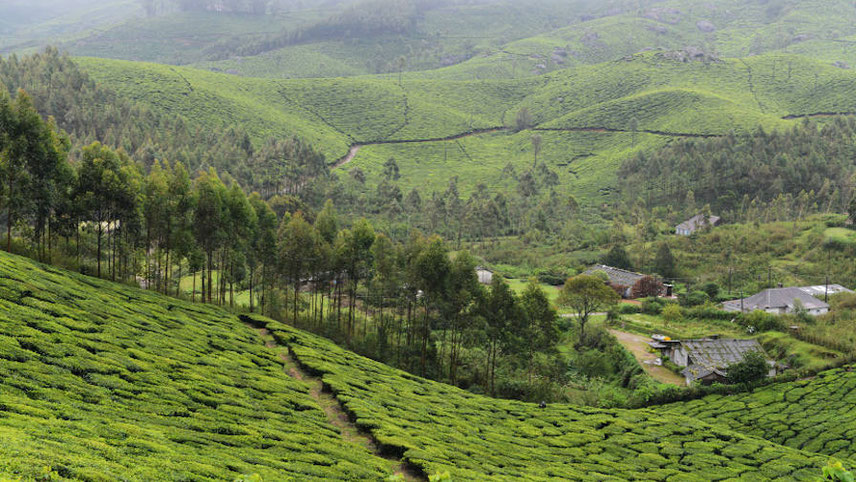
The roadmap for survival of the tea industry is to adopt best practices ensuring quality
TEA
Putting quality over quantity
India, the second largest producer of tea in the world, has been facing several challenges within the industry due to climate changes, declining soil fertility, old-age plantations, stagnation of yield level, as also political and labour issues. The cost of production too has gone up by 45-50 per cent over the last 10 years. To add to that, the industry also lost part of its best quality tea season due to lockdown last year.
With the wage-related costs constituting almost 65 per cent of the tea production, the government has urged the industry to stand on its own feet. In these circumstances, the roadmap for survival is to adopt best practices like quality augmentation, catering to rising consumption of packet tea, branding, promotional activities and focus on exports.
“The tea industry has been going through a roller-coaster ride in 2020,” explains Prabhat Kamal Bezboruah, chairman, Tea Board of India. “With the lockdown affecting production, the prices were first soaring upwards. Then, the rampant misuse of the tea import regime and some poor quality teas being produced sent the prices crashing to levels similar to 2019”. Now, the 2021 prospects will depend on the quality of the crop enabling better pricing, Bezboruah feels. “Exportable variants of tea should be incentivised. We also need to have a cogent export strategy, where specific markets are targeted with specific teas,” he adds.
-

Artificial Intelligence will change the health and welfare of people as never before
HEALTHCARE
The AI revolution
Information technology has become closely linked to high-tech healthcare and electronics for quite some years now. We already know about software suits that integrate CT scan images to form a diagnosis, picture archival systems that enable radiologists to store thousands of images or portable cardiogram devices that have taken heart care into the hinterland.
Now the applications of Artificial Intelligence in healthcare have taken these possibilities to a whole new level. As people across the world try to distinguish an ordinary cough and cold from the dreaded Covid-19, the Wadhwani Institute of Artificial Intelligence (WIAI), Mumbai, has developed a tool to analyse the sound of a cough to tell the difference. It is the final result of months of collaborative research between medical societies in Norway and India (AIIMS Jodhpur and the Mumbai civic body). Later on, the same tool can be modified for us to detect other lung diseases as well.
Similarly Qure.ai, another Mumbai-based start-up, established in 2016, has made much progress in interpreting radiological images to make life easier for specialists in radiology everywhere. It could also help to solve the acute shortage of radiologists in the country.
On another front, Robot-Assisted Surgery is making steady inroads in Indian healthcare, with near 500 systems installed in various leading hospitals in the country. “There is an increased interest from both public and private hospitals to adopt robotic-assisted surgery,” says Mandeep Singh Kumar, vice-president & country GM, Intuitive India, a world leader in these technologies.
NASSCOM, the leading IT industry association, is spearheading a national healthcare innovation challenge in partnership with Biotech Industry Research Assistance Council to promote the use of AI, Internet of Things, Machine Learning, etc, for healthcare applications. On a smaller scale, Bright Beginnings, an NCR-based company has developed ultraviolet sterilisation devices that can sanitise conveyor belts at hotels, airports, etc, or entire rooms, within five seconds to 10 minutes.
These are just a few random examples. Many more will make appearances and change the health and welfare of people as never before.
-
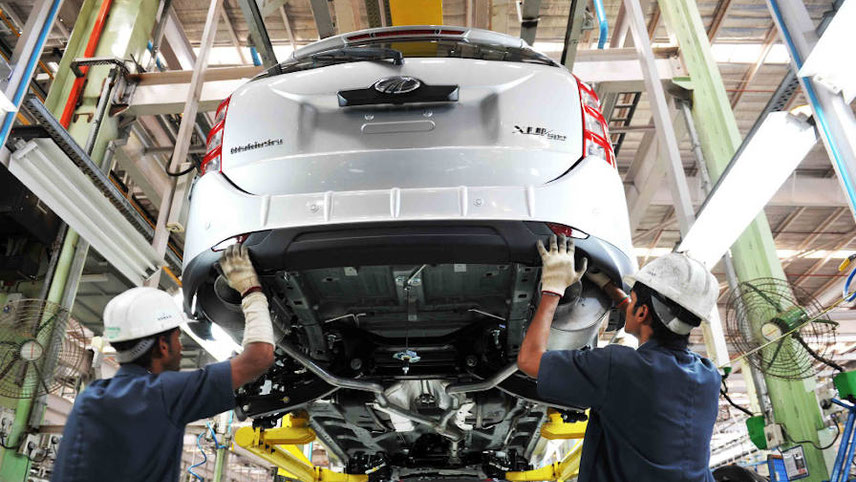
Costlier but safer vehicles will emerge in India in the coming months; Photo: Sanjay Borade
AUTOMOBILES
Changes in the offing
The automotive industry is not out of the woods yet. Because material costs have climbed, manufacturers will bump up sticker prices in 2021 by up to 12 per cent. According to some estimates, this is expected to cause a 14 per cent contraction in sales in 2021.
The year 2021 will also see safer cars. When crash-tested by an independent authority, the safest Indian car was the Mahindra XUV500, followed by the Tata Altroz. The government is also looking to introduce stricter safety norms like compulsory front passenger airbag, anti-lock brakes for sub-125 cc two-wheelers. Advanced driver and rider assistance systems and improved passive safety systems will also make an appearance. Ironically, safety will come at an added cost.
The way we own and drive cars will change. The steep upfront cost of an automobile will lead consumers away from traditional car ownership towards leases and subscription plans. Subscription providers will also tie up with OEMs like Maruti, Tata, Hyundai, Toyota and others. Companies like Ola Electric will expand into the electric two-wheeler business. They recently built the world’s largest scooter plant in Tamil Nadu as part of an Rs2,400 crore project. It will have a capacity of 2 million units per annum and 10,000 direct jobs.
The year that just began will also signal the entry of Tesla into India. The Tesla Model 3 is the American EV maker’s entry-level sedan. It has a range of 518 km per charge, making it the most efficient electric vehicle to go on sale in the country. The Model 3 will come in as a Completely Built Unit (CBU), which is why the pricing will be north of Rs50 lakh.
State and Central electric vehicle policies will benefit from partnerships with private players. A good example is the recent handover of 26 all-electric buses from Tata to the Brihanmumbai Electric Supply and Transport (BEST) in Mumbai. The buses were the first delivery in a 340-unit order as part of the FAME-II initiative.
-

India will counter the dwindling readiness level of its armed forces
DEFENCE
Enhancing preparedness
Recently, a Pakistani drone dropped a box of grenades in Punjab and managed to evade security forces after completing its deadly delivery. This is just proof of a new security threat that India must deal with – unmanned aerial vehicles. Though drones can be and are usually brought down by small arms fire, the Defence Research & Development Organisation is now working on something far more advanced – a directed energy weapon.
A directed-energy weapon or DEW uses Laser-tech to shoot down targets. The DRDO is working on DEWs of up to 100 kW capacity, which will prove useful in anti-drone, anti-ship, anti-personnel and anti-aircraft operations. An example was seen in operation during the Independence Day celebrations in 2020, as part of our Prime Minister’s security cordon.
Next, the Indian Navy has had to contend with a steadily dwindling readiness level. To counter this, the smallest arm of the India’s military services is looking to bulk up its drone force. After leasing two MQ-9B SeaGuardian drones, the Navy recently confirmed the news of the purchase of 10 additional drones worth Rs1,300 crore for use aboard larger warships. Drones are the only weapons platform capable of providing some semblance of air cover in the absence of an aircraft carrier.
The Navy has also issued a circular announcing its interest in Lithium-ion battery technology for its submarines. The Japanese and South Korean navies already use Li-ion power aboard their subs because of the low weight, long-range and quiet operation. Partners to develop the tech should most likely come from the Indian automotive sector.
For a force like India that’s generally slow to acquire new technology, missiles are going to play a stronger role. Along with the new 800-km-range Brahmos ER, we’ll be seeing the Astra Infra-Red air-to-air missile on more aircraft.
Another trend is the heightened interest in the Indian Ocean Region. India has already formed a quad with the US, Japan, and Australia with a two-pronged approach – protecting commercial interests and checking China’s boldness. The UK has also shown interest and has said that it will sail a carrier strike group through the South China Sea area in 2021.
-
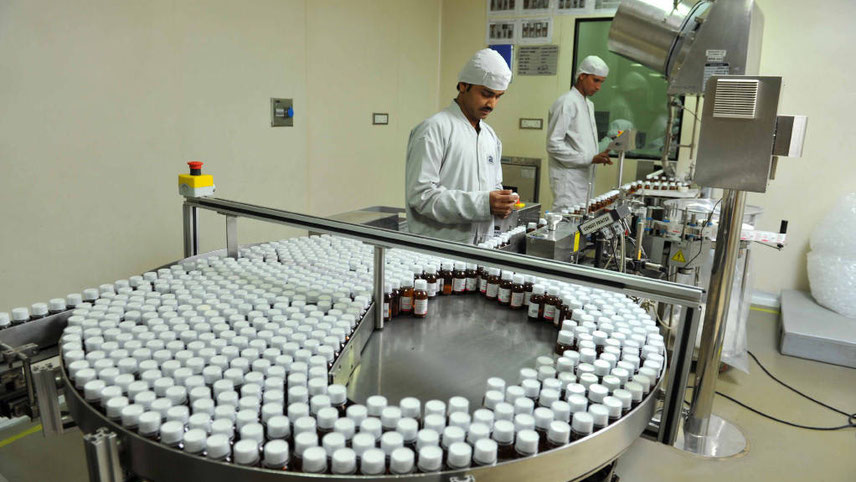
Life could change in many ways for the pharma business; Photo: Sanjay Borade
PHARMACEUTICALS
Genetic research to the fore
Among the various vaccines for Covid-19, which are undergoing trials in different countries, at least three are based on DNA and RNA technology. These are the basic building blocks of all forms of life, including the dreaded viruses that cause numerous diseases in human beings.
Vaccines based on these genetic codes are reportedly more effective than others created with the help of whole viruses, though the latter technology is better established and more widely used in medical practice. This was possible because of stunning advances in genetic research in the past few years, which enabled genetic scientists to map the genes in Covid-19 virus within a matter of months. Similar advances in genetic (or genomic) studies are being harnessed to anticipate the response of individual people to a specific medicine. Soon, it will be possible to develop drugs designed to work in some individuals and not in others.
On another front, a couple of Indian companies, including Bharat Biotech and Serum Institute of India, are working on Covid vaccines that can be administered through the nose. This could be game-changer in tackling the global pandemic, because many problems involved in giving vaccine injections were simply disappear! Human trials are expected to begin soon.
During the past year, when extensive lockdowns were imposed all over the country, many chemists had to deliver products to customers’ homes. Orders were accepted on WhatsApp and payments were made electronically through various platforms. Online pharmacy companies got a huge fillip, particularly when doctors were allowed to consult and prescribe electronically.
Pharma companies also faced the challenge of promoting their products amidst the lockdowns. They had to resort to webinars or individual video-calls with prescribing physicians. This will probably increase during 2021. Similarly, the drug firms are developing what are known as ‘pharma services’. This includes giving reminders to customers when prescriptions need to be refilled. Data management systems involved in running these services are bound to be huge.
Life could change in numerous ways for the pharma business as well as for individuals, and we just have to wait and see.
-

The government’s attempt to open up coal mining evokes mixed reactions; Photo: Sanjay Borade
COAL
Debatable move
In June last year, the government launched coal auctions for commercial coal mining, hoping that private players would invest and increase the country’s coal production and reduce the quantum of coal import. One may dispute the fact that such an auction of coal mines in Covid times was a good idea. However, it seemed justified, as the power sector was struggling (usually, 80 per cent of coal production is consumed by the power sector, but now the demand has flattened).
The move has also triggered the debate that, instead of emphasising more on clean energy, the government has permitted increasing fossil fuel production, which cannot be looked at as an inspiring effort. But Pramod Agrawal, chairman, Coal India, is optimistic about the future of the coal sector. “Coal will continue to be the dominant energy provider of the country in the foreseeable future,” he argues. “At present, close to 55 per cent of primary commercial energy requirement is met by coal.”
Coal India holds close to 54 per cent of the country’s entire coal resource base of 329 billion tonnes. And, it was in a bid to substitute coal imports with its own coal under the Atmanirbhar Bharat move, that it introduced a new auction window (special spot e-auction) for coal importers in October last year. Under this move, the company has booked 7.3 million tonnes in three months.
-

India expects to be in the forefront of driving the renewable march in the coming years; Photo: Sanjay Borade
POWER
Recharging the sector
In the Corona impacted year which, like other core businesses, put the power sector stakeholders also in a subdued mood in varying degrees, the report: Renewables 2020: Analysis and Forecast to 2025, released in November by the International Energy Agency (IEA), offered something to cheer about. The report puts India in the league of countries in the forefront of driving the renewable march in the new and coming years by reducing its dependency on conventional sources which today is as high as 70 per cent.
Positive pointers, especially on the renewable front notwithstanding, the year 2021 is definitely going to be quite challenging for the power sector. Firstly, the drastic fall in demand in 2020 due to lockdown of the industrial and commercial segments for a larger period has to be revived. And then there are structural issues pertaining to discom losses, which became more alarming in 2020, following serious disruption in revenue collection from C&I (commercial and industrial) segments. Going by estimates from different agencies, the power capacity addition in 2020 would be quite dismal – 7.5GW-8GW – mostly driven by the renewable sector, with contribution from the still dominating conventional sources not more than 2GW.
The capacity addition in the renewables, which slipped to its five year low in 2020, is expected to bounce back and nearly double in 2021 to the tune of 12-13 GW, with several pending projects being fast-tracked. But, with solar tariff falling close to Rs2 in a recent auction, there are fears of more discoms (as has happened in Andhra Pradesh) asking for price renegotiation. And this is going to further complicate the pricing dynamics in the market. The rooftop segment may continue to under-perform as commercial and industrial segments will be more focussed on restoring their operations to the pre-Corona levels.
If the year is not buffeted by 2020 kind of insurmountable troubles, a healthy demand in electricity is almost a guaranteed factor. But there would be less inclination to fire up thermal projects again, as a majority of coal fired projects (with a staggering pipeline of 40GW) is reported to be under stress. After Gujarat, more states may announce that they are not allowing green-field thermal projects on their turf.
-
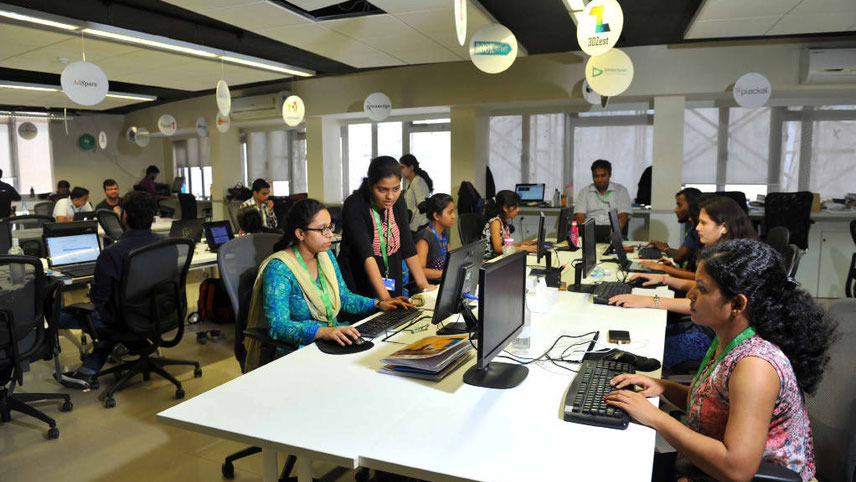
For the Indian start-up ecosystem, 2021 has begun with a bang; Photo: Sanjay Borade
START-UPS
Bullish trends
Last fortnight, consumer electronics and fashion start-up boAT announced it was raising $100 million from Warburg Pincus. This was followed by the B2B e-commerce platform UDAN confirming a further infusion of $280 million from existing investors. And, if there is no further Corona-led disruption this year, observers are confident that start-ups, which have travelled a fair distance from their starting point, would continue to sail smoothly.
The abrupt lockdown last year had created an existential crisis for a majority of start-ups, especially for those who were looking for pre-series funding. And many of them had to bring down their shutters. But after a brief pause, investors were back in action, helping the new crop of entrepreneurs to pursue with their dreams.
According to an estimate, in about 775 deals over $8.5 billion of fresh capital infusion was witnessed in start-up firms in 2020. In 2021, the investment quantum, at close to $12 billion, was higher, but considering the Covid-19 led devastation, nobody in the start-up circle is complaining, as the year saw the emergence of nine new unicorns and Byju’s notching that rare distinction of turning a decacorn.
In the recent past, maximum action has been witnessed in start-ups aligned with segments like fintech and financial services, ed-tech, e-commerce and retail and health-tech. Surprisingly, recent months have also seen a new crop of agri-tech firms beginning to draw big bucks from the PE firms. Further consolidation in the leading start-up entities aligned with these businesses is expected during the course of the year.
-
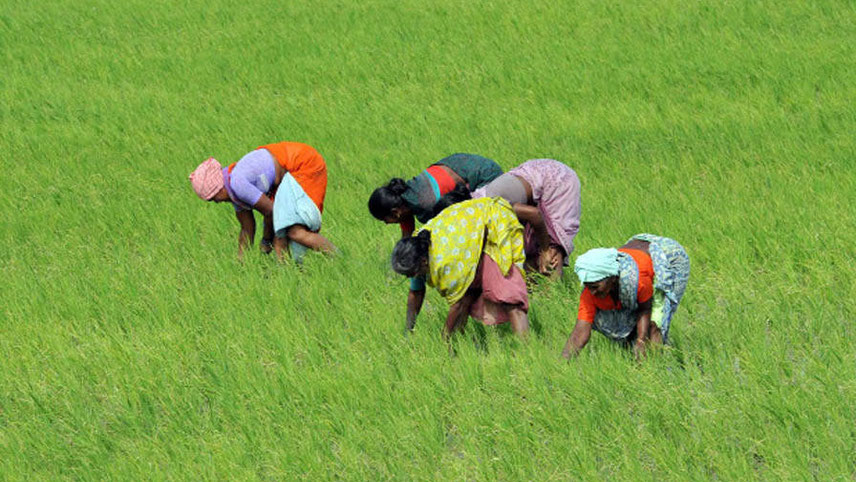
Provided that there are no major upsets, the Indian farming market will continue to grow; Photo: Sanjay Borade
Agriculture
Good news from farms
The first advance estimates of the Covid-struck economy released by the government showed that the farm sector is likely to grow at 3.4 per cent in the current fiscal year while most other sectors will shrink. The share of farm exports in the value added by agriculture shot up to 5.7 per cent in Q2, the best since 2018-19. This suggests that exports, too, are lifting agriculture up (demand), in addition to a good harvest (supply). Will the trend continue in 2021? A lot will depend on how the government handles the situation emerging out of the current farmers’ unrest. Other factors, like the monsoon (for rain-fed farming), will also play a part as usual.
Provided that there are no major upsets, the Indian farming market, which was worth Rs18,36,700 crore in 2019, will continue to grow, cementing its place among the world’s five largest producers of over 80 per cent of agricultural items, from major staples like wheat and rice to cash crops such as coffee and cotton.
Abroad, digitization, Internet of Things and sustainability are the three megatrends guiding the agriculture industry. Solutions to digitize the farmer’s life by delivering holistic management platforms and monitoring systems are gaining acceptability. Given the varying agricultural practices across India and the changing economic indices of the farming community due to weather and other natural calamities, it is difficult to transport such a technological model whole-scale to India.
But these trends will gain popularity in India, especially among our new-age farmers. Factors such as farm mechanisation, increasing usage of fertilizers, improving irrigation techniques, better seeds and easy availability of credit that power crop yields will be major drivers of the Indian farming industry.
Irrespective of whether the farm reforms are implemented in toto, Budget 2021 will provide for allocating substantial MSP for key crops and funds for effective and seamless implementation of the farm laws.
-
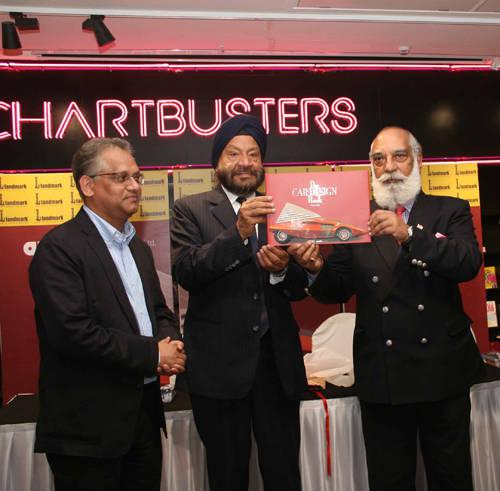
There won’t be any reduction in the demand for ‘good’ content
PUBLISHING
Old wine, new bottle
Can books survive? It’s not even a new question, unfortunately, especially for fiction. The answer, like in many other sectors, lies in adapting contours rather than absolutes. Yes, the crinkling of pages, the varying sizes and shapes, the striking covers, the aromas of books old and new – part of human lives for centuries – may reduce gradually.
There are more fundamental changes taking place too. The publishing sector, globally and in India, is likely to see some short-to-long-term changes in 2021. Consolidation of publishers is likely to gather pace, as is seen in instances such as the offer of $2.2 billion by Bertelsmann, owner of the world’s largest publisher, Penguin Random, to buy Simon & Schuster, the US’s third largest publisher recently – a move likely to be confirmed soon, creating a publishing behemoth with global impact.
Other changes, such as the digitisation of books, be they in the form of e-books or audio books, are likely to gather pace. The demands of finding a publisher may soon be at an end too – self-publishing and publishing on demand are trends that are likely to catch on. Even events – book launches, festivals et al – will return eventually, even sooner than one expects. Online engagement will increase in importance. Thankfully, there is no reduction in the demand for ‘good’ content, for which books remain a paramount source – something publishers and readers alike can draw comfort from.
